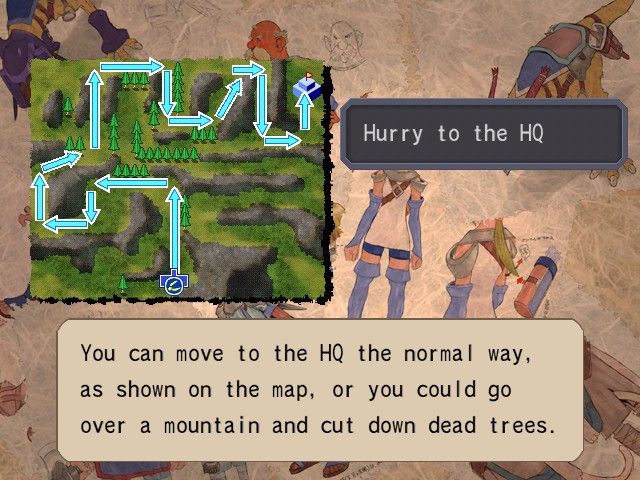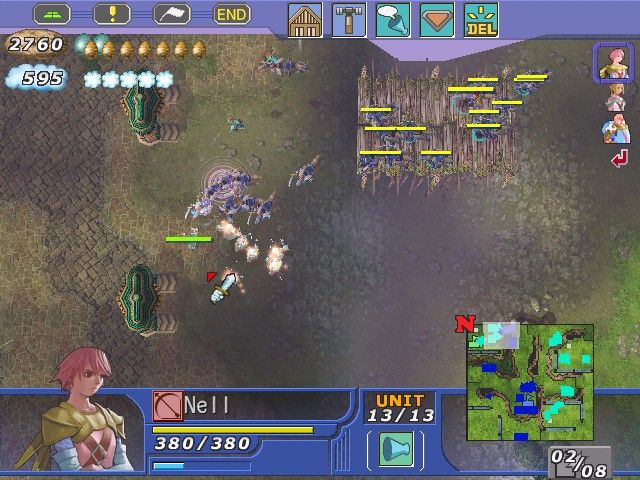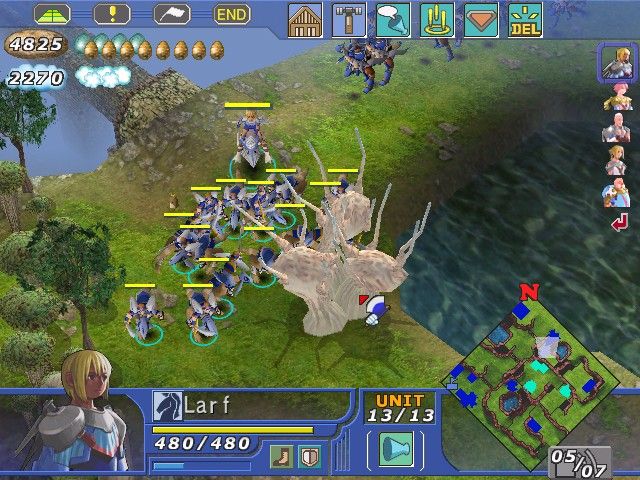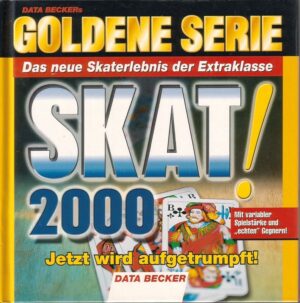Retro Replay Review
Gameplay
Hundred Swords streamlines traditional real-time strategy by having you command small squads of five to twenty soldiers rather than individual units. This approach cuts down on tedious micro-management, freeing you to focus on larger tactical decisions. Each squad clusters around a central officer, and you’ll issue commands for movement, formation and engagement with simple click-and-drag controls. The result is a brisk, action-oriented battlefield where every decision counts.
(HEY YOU!! We hope you enjoy! We try not to run ads. So basically, this is a very expensive hobby running this site. Please consider joining us for updates, forums, and more. Network w/ us to make some cash or friends while retro gaming, and you can win some free retro games for posting. Okay, carry on 👍)
Underpinning the combat is a familiar “rock, paper, scissors” system: cavalry units charge down mages, mages cast spells to decimate infantry, and infantry can overcome cavalry with clever positioning. To expand your forces, you must secure mines that generate two essential resources. Your officers can then recruit fresh troops in nearby barracks, provided you maintain a healthy supply chain. This resource loop adds strategic depth without bogging you down in complex economy micromanagement.
Missions in Hundred Swords vary from frantic defenses to sweeping offensives, sometimes with strict time limits that raise the stakes. Success earns you magical items called shells, which can be equipped to your officers and activated for temporary battlefield perks like health regeneration or enhanced attack power. As your commanders accumulate experience, they grow more resilient and can lead larger squads, creating a satisfying sense of progression.
Beyond the campaign, Hundred Swords offers a mission mode where you can replay individual battles with specialized units not available in the main story. For competitive players, up to four participants can link via local network or internet for head-to-head matches. Whether you prefer solo challenges or multiplayer skirmishes, the game’s streamlined interface and balanced unit system keep the action engaging.
Graphics
Originally developed for Sega’s Japanese net@ service and later ported to Dreamcast, Hundred Swords brings its fantasy world to life with early-generation 3D graphics. Environments feature rolling hills, dense forests and fortified keeps, all rendered in a slightly stylized polygonal aesthetic. While textures can look dated by modern standards, the clear unit models and distinct color coding make it easy to identify friend from foe in the heat of battle.
Story sequences alternate between anime‐style still images and real-time 3D cut-scenes. The illustrations feature expressive character art that captures the charm and drama of Prince Larf’s quest, while the in-engine cinematics add dynamic camera angles and motion to key story moments. This dual presentation gives the narrative a cinematic flair without demanding heavy hardware, making it accessible to older PCs.
On the battlefield, the camera system allows for smooth zooming and rotation, letting you survey the entire playfield or hone in on individual skirmishes. Animations for sword clashes, magical spells and cavalry charges are straightforward but convey weight and impact effectively. Although particle effects are modest compared to contemporary titles, the bright spell visuals and clear unit outlines ensure that special abilities remain visually satisfying.
Story
At its heart, Hundred Swords tells a classic fantasy tale: Prince Larf’s peaceful romance with a princess is shattered when a malevolent empire invades their homeland. Determined to rescue his beloved, Larf rallies his loyal commanders and embarks on a perilous journey through war-torn provinces. The setup may feel familiar, but the game’s heartfelt dialogue and earnest character moments give it genuine warmth.
The narrative unfolds through elegant anime stills accompanied by text dialogue, interspersed with short 3D cut-scenes that showcase pivotal battles and emotional confrontations. This alternating format keeps the pacing brisk and provides just enough context for each mission’s objectives. While the translation occasionally leans into melodrama, it enhances the fairy-tale atmosphere rather than detracting from it.
Character development centers on Larf and his core group of officers, each with distinct personalities and combat specialties. You’ll come to care about their growth as they earn experience points, swap shells for fresh abilities and survive close-call engagements. Although secondary characters get less screen time, the game’s concise campaign means there’s little filler—every chapter advances both the plot and your tactical repertoire.
Overall Experience
Hundred Swords strikes a rewarding balance between accessible real-time strategy and engaging storybook fantasy. The simplified unit control and clear rock-paper-scissors combat loop make it ideal for both newcomers and veterans looking for a fast-paced RTS fix. Mission variety, from timed assaults to defensive stands, ensures that no two battles feel identical.
The blend of 3D graphics and anime artwork lends the game a nostalgic charm that appeals to fans of late-90s era titles. While the visuals won’t rival modern blockbusters, they remain functional and stylistically consistent, preserving the dream-like quality of the story. Sound effects and the musical score further reinforce the epic fantasy setting without ever becoming overwhelming.
Whether you’re diving into the singleplayer campaign or linking up with friends for multiplayer skirmishes, Hundred Swords delivers a solid, enjoyable experience. Its straightforward mechanics, coupled with character progression and shell-based power-ups, make each play session feel purposeful. If you’re in search of a bite-sized RTS adventure with a charming narrative, Prince Larf’s quest is well worth your time.
 Retro Replay Retro Replay gaming reviews, news, emulation, geek stuff and more!
Retro Replay Retro Replay gaming reviews, news, emulation, geek stuff and more!









Reviews
There are no reviews yet.